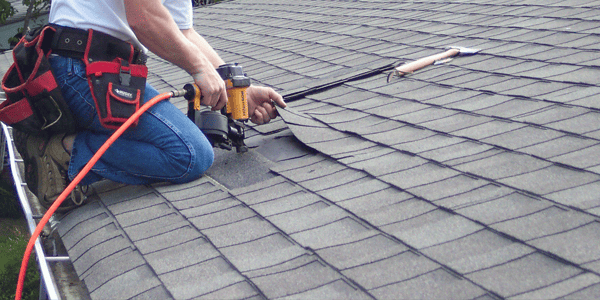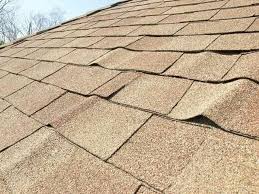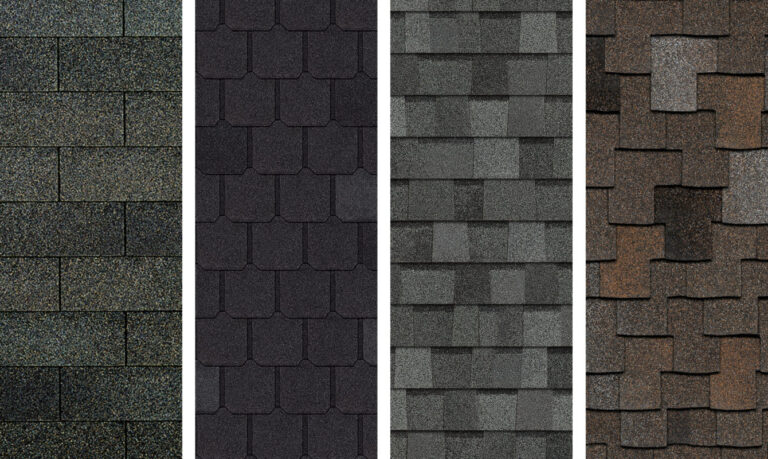Your home can be many things for you:
- A space to connect with friends and family 👪
- The place where you rest after a long day at work 🛌
- An area to engage in hobbies and leisure activities 🎨
None of this would be possible without a roof over your home to protect you and your family from the elements. When it’s time for a roof replacement, you want to choose a durable material that will provide shelter to you and your loved ones for years to come.
But how do you know when it’s time for a roof replacement in the first place? How long does a roof last? Here, we break down the average lifespans of the most common roofing materials used on residential homes, and we also discuss a few factors that can influence any roof’s longevity.
Roof Longevity By Material
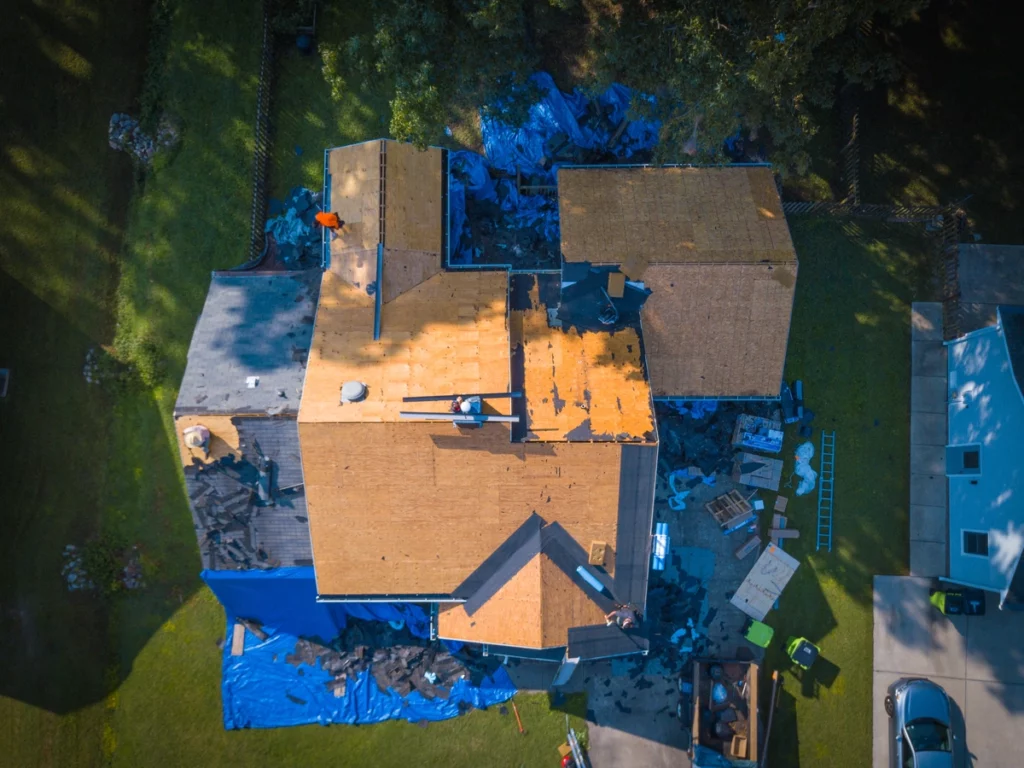
One of the best ways to anticipate how long your roof will last, is to know what materials it is made out of. Here are some of the most common roofing materials on the market, as well as their expected lifespan.
Asphalt Shingles
Asphalt shingles come in two varieties: three-tab and architectural shingles.
Three-tab asphalt shingles get their name from their shape; each piece of roofing material has three tabs on the bottom, giving it the appearance of three separate shingles in one. These shingles lay flat on the roof and have a uniform, one-dimensional appearance.
Architectural shingles, on the other hand, have a greater depth in appearance. They’re made from several layers of asphalt stuck together, and this makes them more durable than three-tab shingles. They’re also heavier and generally considered to be more attractive than their three-tab counterparts.
Three-tab shingles are lightweight, and while this makes them affordable, it does mean that they don’t last very long. You can expect three-tab asphalt shingles to last approximately 15 to 20 years.
Architectural shingles have a slightly longer anticipated lifespan. They should last around two to three decades.
If you have a flat roof, you might have a kind of asphalt roof known as built-up roofing. This kind of roof is created with layers of asphalt and felt and normally lasts 20-30 years.
Metal Panels
Metal roofs are becoming increasingly popular for residential and commercial buildings alike. In addition to their eco-friendliness comparative to asphalt roofs, they also generally require less maintenance than other roofing materials.
Several different kinds of metal are used for roofing, and each type has its own life expectancy.
- Corrugated metal: 30-45 years
- Copper: 100+ years
- Steel: 40-70 years
- Aluminum: 50 years
- Zinc: 100 years
- Stone-coated metal: same as steel (40-70 years)
In addition to several types of metal, these roofs also come in two styles: exposed fastener and standing seam. Exposed fastener roofs are exactly what they sound like; the fasteners used to hold down the metal panels are exposed to the elements. In contrast, standing seam metal panels cover their fasteners, protecting them from the sun, precipitation, and wind.
Exposed fasteners tend to weather more quickly than the metal panels themselves, so expect to perform fastener repair and replacement several times over the lifespan of your exposed fastener metal roof.
Clay Tiles
When you think of clay tile roofs, you probably imagine the quintessential red of terracotta. These roofs are popular with Spanish colonial, Mission-style, and Mediterranean homes. They’re very popular in the southwestern United States because of clay’s ability to keep the house cool, and clay tiles are incredibly resistant to fire, mildew growth, insect infestations, and strong winds.
As long as it is well taken care of, you can expect a clay tile roof to last at least 50 years and up to 150 years.
Slate and Concrete Tiles
For an even sturdier option than clay tiles, some homeowners opt to go for slate tiles on their roofs. Not much can take down slate roofing, and as long as your foundation can bear the weight, your slate roof will literally last you a lifetime.
While many other materials are made to mimic the look of slate roofs (they can be made from metal, asphalt, and even composite plastics), a true slate roof is made from either natural stone or concrete. These stone roofs carry the highest ratings on the market for fire and impact resistance.
As some of the most long-lasting roofing materials out there, slate shingles or tiles will protect your roof for anywhere from 50 to 200 years. Concrete tiles provide slightly less protection, but they will still last 50-75 years.
Wood Shingles and Shakes
Wood shingles and shakes are usually made from cedar, spruce, or pine. Because wood is a completely organic material, wood roofs are thought to be some of the most eco-friendly roofs out there.
Wood shingles tend to be thin and uniform while shakes are thicker and much more textured in appearance. The difference in appearance between the two materials is akin to the difference between three-tab and architectural shingles described earlier.
Both wood shakes and shingles can last up to 30 years, but you’ll need to perform a lot of upkeep on a wood roof in order to take advantage of its full lifespan. It’ll be incredibly susceptible to wood rot, mold growth, pest infestation, and other forms of damage, so it’s more likely that your wooden roof will only last 15-20 years. This likelihood only increases if you live in an area with lots of humidity or that experiences freezing and thawing temperatures throughout the year.
4 Factors That Affect Roof Life Expectancy
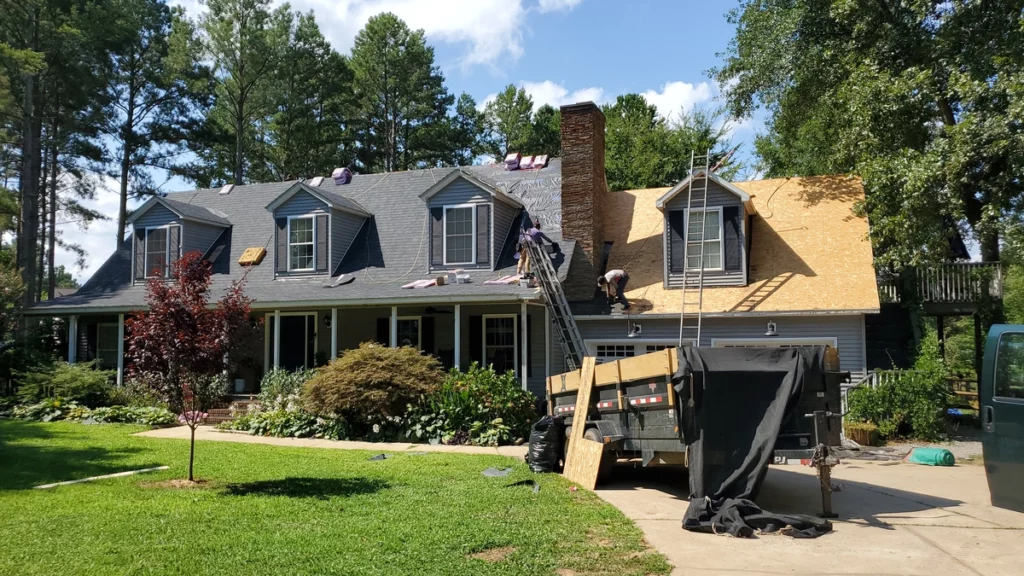
How long a roof lasts is dependent on more than just the kind of material it’s made from. Several other factors go into the longevity of your roofing system, including the weather where you live, how it was installed, and whether you regularly maintain your roof.
In general, don’t expect to get the full manufacturer’s lifespan of your roof out of your roofing materials. After all, real-world conditions rarely end up being ideal, and even under the best of circumstances, your roofing materials will likely have their lives cut short. If your roof has been properly installed and well-ventilated, you can expect to get about 80% of its total lifespan as the usable lifespan of your roof.
1) Climate ☀️
Even the most durable materials will bend under the pressure of an unsuitable climate.
Take clay tile roofs, for example. They’re supposed to last for decades, and in dry, arid climates, they typically live up to this expectation.
However, clay tiles don’t stand up well to repeated impact, and they also don’t weather well in freezing temperatures. If you live in the Midwest, where tornadoes, hailstorms, and freezing winters are common, you’ll be disappointed with how quickly you’ll need to replace your roof if you use clay tiles as the main material.
An asphalt shingle roof, on the other hand, is flammable and won’t hold up as well as metal, clay, or concrete tile roofs do in fire-prone areas. This is why it’s important to choose a roofing material that’s suited to your specific climate.
2) Your Yard 🏠
The immediate surroundings of your home and roof are just as important as your overall climate. If you have overhanging branches, they may keep the UV rays off of your roof, but they’ll also lead to increased potential for mold growth and seedling sprouts in your gutters and on your roof.
Additionally, heavy branches pose a risk to the integrity of your home, and if they fall on your roof during a storm, they can crack shingles or tiles or even put a hole in your roof. Not to mention, if your insurance finds out that a limb fell because the tree was rotten or otherwise improperly kept, you might be on the hook for the cost of damages!
3) Installation Process 🔨
The integrity of your roof is only as good as the quality of its installation. You should always work with a qualified, certified, and insured roofing contractor when you need a new roof. They’ll be up-to-date on the latest techniques in residential roofing, and if an issue comes up either with the quality of the product or the installation, the cost will be covered by the manufacturer or workmanship warranty.
Proper installation includes ensuring that your home has good attic ventilation. This prevents your roofing materials and your insulation from retaining moisture, which will dramatically decrease the usable life of your roof.
4) Upkeep 🧹
With routine maintenance, your roof can last longer and provide superior performance vs if you don’t work with it at all. With minor frequent repairs, you should be able to avoid having to invest in many major repairs throughout the lifespan of your roof.
How Long Does a Roof Last?: Answered
How long a roof lasts depends on the material it’s made from, the kind of climate it’s in, and the quality of its installation.
You deserve to have a roof that lasts as long as possible, with professional support to help ensure it does just that. Here at Tidds Roofing, we provide premium installation services on all new roofs, and most projects can be completed in a single day.
Ready to receive your free roof inspection? Contact us now to get started!
